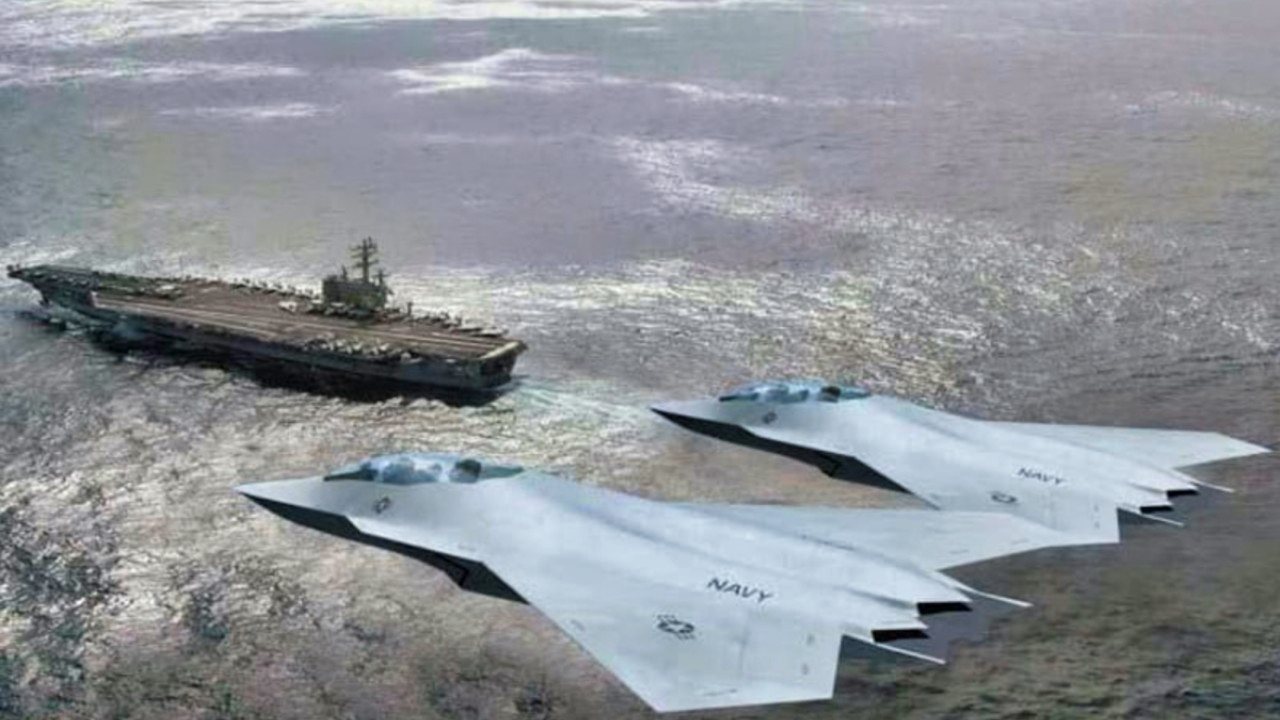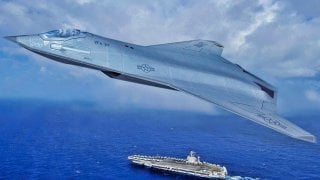How the Navy's F/A-XX Sixth-Generation Fighter Will Thwart China
Facing budget constraints and rising tensions with China, the U.S. Navy has made significant cuts to its Fiscal Year 2025 R&D budget, delaying funding for the F/A-XX sixth-generation fighter program.
Summary: Facing budget constraints and rising tensions with China, the U.S. Navy has made significant cuts to its Fiscal Year 2025 R&D budget, delaying funding for the F/A-XX sixth-generation fighter program.

Key Points
-While the Air Force continues to invest in its Next-Generation Air Dominance (NGAD) program, the Navy is focusing on existing military systems and readiness for potential near-term conflicts, particularly in the Indo-Pacific region.
-Despite the cuts, the Navy remains committed to developing the F/A-XX, which will feature advanced stealth capabilities, AI integration, and "loyal wingman" drones. The program's timely introduction in the 2030s is seen as crucial for countering China's expanding military capabilities.
F/A-XX Program Faces Cuts as Navy Focuses on Immediate Readiness
The U.S. Navy recently made drastic cuts to its Fiscal Year 2025 budget, most notably in research and development. While the service prepares for a potential future war with China, it is prioritizing the military systems already in place instead of future projects that would not be introduced until the 2030s.
Under the guidance of the National Defense Strategy, the Navy and Air Force are functioning with the belief that Beijing could be prepared to set off its expected invasion of Taiwan as early as 2027. If true, certain next-generation programs may not be operational according to this timeline.
Although the Air Force is maintaining significant monetary allocations for its Next-Generation Air Dominance (NGAD) sixth-generation program, the Navy is dramatically cutting its spending for its own F/A-XX superiority fighter program.
As the Hamas-Israel war wages and the tensions in the Red Sea are on the rise, the Navy has to prioritize its ongoing operations in addition to increasing its presence in the Pacific region in an effort to deter Beijing. However, just because the service is not putting all of its eggs in the F/A-XX basket does not mean it has not been preparing to fill out its inventory.
For the last decade, the Navy has extended its fourth generation F/A-18E/F Super Hornet production fighter line to be equipped with the latest technologies in order to avoid a fighter jet shortfall. The introduction of the fifth-generation F-35C has also been ordered in large swaths.

“Where the Department of the Navy really placed its priorities is on our fundamental mission of being forward-deployed around the world so that if a crisis hits, we’re there on the scene,” Navy under secretary Erik Raven told Defense News in the days following the release of the Fiscal Year 2025 budget. “Readiness and people were the two top priorities that really came through in this budget.”
F/A-XX: Introducing the U.S. Navy’s sixth-generation fighter and why it matters
Although the Navy is focusing on its existing military systems to thwart China in the near future, it has not totally abandoned its next-generation concept. The exact specs and capabilities surrounding the service’s new F/A-XX doctrine remain highly classified, but the upcoming aircraft is expected to be able to perform in air combat and air-to-air and air-to-ground attack roles.
Significantly, the F/A-XX should be able to operate in anti-access/area denial environments as the People’s Republic of China is rapidly expanding its arsenal of advanced weapons systems. The aircraft will likely exhibit next-generation stealth features, including sophisticated sensors and radars with networking adaptability similar to the F-35 Joint Strike Fighter.

This open architecture design will enable an array of payloads, sensors, and weapons to be interchanged. Additionally, the service has outlined the need for the fighter to be able to undergo air-to-air refueling, reconnaissance, surveillance, and target acquisition.
Like the Air Force’s own NGAD sixth-generation fighter program, the F/A-XX will incorporate Collaborative Combat Aircraft (CCAs). These specialized unmanned aerial vehicles will fly alongside the sixth-generation fighter jet, serving as “loyal wingmen” drones. As detailed by analyst Peter Suciu, “We can expect artificial intelligence (AI) and machine learning (ML) to be incorporated into the NGAD, acting as a co-pilot for the manned aircraft and allowing the unmanned aerial systems (UAS) to act independently. In other words, the drones won’t require constant directions from the manned aircraft—they’ll follow orders, of course, but still show initiative.” All the big-name manufacturers are eager to be awarded with contracts to develop this new fighter program.
Last year, Boeing, Lockheed Martin. and Northrop Grumman all announced they were competing for the aircraft. Additionally, the typical aircraft OEMS GE Aerospace and Pratt & Whitney were revealed to be competing to secure the F/A-XX’s engine contract.
As tensions between Washington and Beijing continue to amplify, the Indo-Pacific region is becoming a likely future area of combat operations for sixth-generation platforms across the board. With this knowledge in mind, the Navy will have to require its F/A-XX fighter jet to possess long-range capabilities in order to evade China’s air defense systems over long distances.
The service may not be allocating large resources to its next-gen program today, but the timely introduction of the F/A-XX in the 2030s will be paramount as Beijing works to field its own sixth-gen counterpart.
About the Author: Maya Carlin
Maya Carlin, National Security Writer with The National Interest, is an analyst with the Center for Security Policy and a former Anna Sobol Levy Fellow at IDC Herzliya in Israel. She has by-lines in many publications, including The National Interest, Jerusalem Post, and Times of Israel. You can follow her on Twitter: @MayaCarlin.


